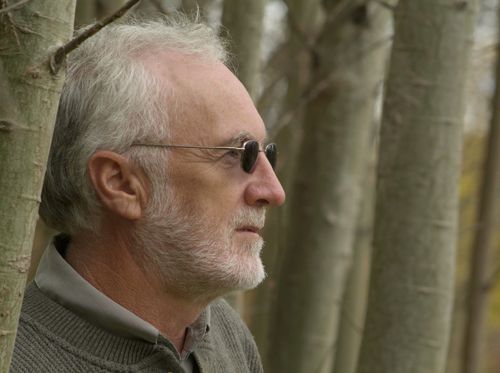
What would you ask an alien arriving on Earth? Jack Trevors knows what he’d ask: “Where are you from, and what’s your genetic code?” More important and more challenging, says the professor in U of G’s School of Environmental Sciences, is this: What might the visitor’s answers tell us about where humans came from?
His interest in the origin of DNA and how life evolved to yield everything from microbes to science professors underpins a new paper co-authored by Trevors and Luke Masson, a molecular biologist at the Biotechnology Research Institute of the National Research Council of Canada in Montreal. Their paper, “Quantum Microbiology,” appears in the journal Current Issues in Molecular Biology.
The paper discusses quantum events in microbial processes and the atomic and subatomic structure of matter. That matter includes genetic material that appeared along with the first micro-organisms billions of years ago.
Trevors says any explanation of life’s origins should consider connections between matter’s quantum nature and the origins of RNA and DNA in single-celled creatures like bacteria and in multicellular organisms including humans. “How do you put together quantum mechanics with the origin of life and the rapid diversification to millions of species, including you and me?” he asks.
Quantum mechanics describes processes at the subatomic scale, including several paradoxical ideas about matter. For instance, the phenomenon of “entanglement” suggests that two separated particles can influence one another even from opposite sides of the Earth.
Another phenomenon is superposition, or the claim that an object remains in all possible states until attempts to measure or observe it make the object collapse to a single state.
Perhaps DNA acts like a quantum computer, assessing all possible mutations before settling on the most beneficial one for a microbial cell. But Trevors and Masson counter that it’s difficult to understand how the DNA molecule could remain coherent long enough to get feedback about the effects of various mutations. “The final mutation is really selected for when the micro-organism survives and reproduces,” says the Guelph professor.
Quantum effects may help explain the light-gathering process of photosynthesis and how enzymes help drive and speed up biochemical reactions. They may even underpin how birds use the Earth’s magnetic field for migration, or how you recognize odours, says Trevors.
Molecules vibrate at signature frequencies ─ information that changes into electrical signals en route to the brain, allowing you to distinguish the aroma of different brands of coffee or liqueur. Unlike a lock-and-key model that relies on fitting molecules to receptors like jigsaw pieces, this vibrational model involves quantum tunnelling and energy states of subatomic particles like electrons.
Explaining how life and its genetic instructions came about is more complicated and calls for more research and experimental evidence, says Trevors. He and Masson explore whether life began with quantum information processing, leading to DNA replication for reproduction and other functions that allow genetic material to encode proteins.
They write: “The quantum basis of matter by some mechanism made available the correct encoded, organic genetic instructions for the first microbial cells capable of growth and division. Science has yet to discover if quantum events tipped non-living atoms and molecules to become a living organism.”
Acknowledging that the paper poses a big question without offering definitive answers, Trevors says they hope to stimulate debate, including discussion of how to design experiments to test origin theories. For example, scientists might make a synthetic cell that can live and reproduce. Last year, scientists led by American geneticist Craig Venter manipulated a bacterial genome to develop what they called the first synthetic life form.
Might life have evolved elsewhere in the universe? It wouldn’t surprise this U of G researcher, although for a reason that might appear counterintuitive. “Life is not necessary anywhere in the universe. We’re living but not necessary. There’s no need for life on Earth or anywhere. The universe can continue without life. We’re searching for our origins, where we came from.”
There’s plenty of evidence supporting the theory of evolution, says Trevors. But coming up with a theory about how and where life originated is much more difficult.
Perhaps he’s also asking “why we came” in the first place, a question that might stump even that extraterrestrial visitor.